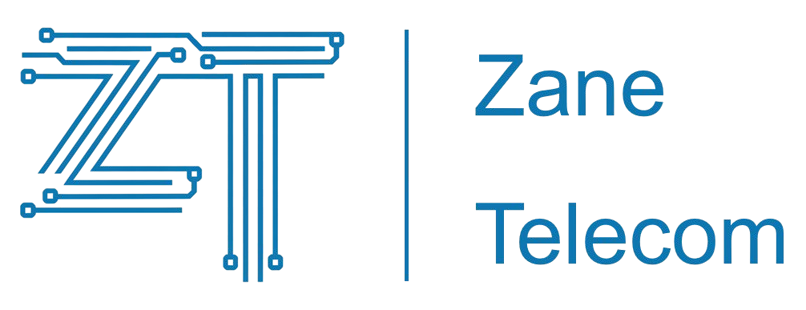In the telecommunications industry, optical transmission and electrical signal transmission are two major information transmission methods, each with its own unique advantages and disadvantages.
Advantages of Optical Transmission
1. High Bandwidth
Optical transmission can provide extremely high bandwidth and meet the high-speed transmission requirements of large amounts of data. With the continuous development of applications such as high-definition video, cloud computing, and big data, the demand for bandwidth is increasing. Optical transmission can easily cope with these challenges. For example, in the high-speed interconnection between data centers, optical transmission can achieve transmission speeds of dozens or even hundreds of gigabits per second.
2. Low Loss
Optical fibers have extremely low transmission losses and have a significant advantage over electrical signal transmission in long-distance transmission. This means that signals can be transmitted over longer distances without the need for frequent signal amplification, reducing the complexity and cost of the system. For instance, the transoceanic submarine cable communication takes advantage of the low-loss characteristic of optical transmission.
3. Strong Anti-interference Ability
When optical signals are transmitted in optical fibers, they are not affected by electromagnetic interference. In modern society, there are numerous sources of electromagnetic interference, such as power lines and wireless communication devices. Optical transmission can maintain stable signal quality in a complex electromagnetic environment. This is crucial for some applications that have high requirements for signal quality, such as medical equipment and financial trading systems.
4. High Security
Optical signals are difficult to be eavesdropped on or interfered with because optical fibers do not radiate electromagnetic waves and are hardly detectable by external devices. Meanwhile, the optical transmission system can adopt encryption technology to further improve the security of communication. For example, in the communication of sensitive fields such as government and military, the security of optical transmission has been widely applied.
Disadvantages of Optical Transmission
1. High Cost
The construction and maintenance costs of the optical transmission system are relatively high. The laying of optical fibers requires professional equipment and technicians, and the price of optical fibers themselves is also relatively expensive. In addition, optical transmission equipment such as optical transceivers and optical amplifiers are also costly. This restricts the application of optical transmission in some cost-sensitive application scenarios.
2. Difficult Installation and Maintenance
Optical fibers are relatively fragile and need to be handled carefully during installation and maintenance to avoid damage. Moreover, once an optical fiber fails, it is rather difficult to locate and repair the fault, which requires professional technicians and equipment. In contrast, the cables used for electrical signal transmission are relatively sturdy, and their installation and maintenance are relatively easy.
Advantages of Electrical Signal Transmission
1. Low Cost
The construction and maintenance costs of the electrical signal transmission system are relatively low. The price of cables is relatively cheap, and their installation and maintenance are also relatively simple, without the need for professional equipment and technicians. This gives electrical signal transmission an advantage in some cost-sensitive application scenarios.
2. Easy to Implement
The technology of electrical signal transmission is relatively mature and easy to implement. Various electronic devices and circuits can conveniently process electrical signals, and the transmission distance of electrical signals can also be extended by using amplifiers and other devices. For example, in the network wiring of homes and offices, electrical signal transmission is the most common method.
3. Good Compatibility
Electrical signal transmission has good compatibility with existing electronic devices and systems. Most electronic devices can directly receive and process electrical signals without the need for additional conversion. This makes electrical signal transmission very convenient in some application scenarios that require integration with existing devices.
Disadvantages of Electrical Signal Transmission
1. Limited Bandwidth
The bandwidth of electrical signal transmission is relatively low and it is difficult to meet the requirements of high-speed data transmission. As the amount of data continues to increase, the bottleneck of electrical signal transmission becomes more and more obvious. For example, in applications such as high-definition video transmission and big data transmission, problems such as stuttering and delay may occur in electrical signal transmission.
2. Large Loss
When electrical signals are transmitted in cables, they will be affected by factors such as resistance and inductance, resulting in relatively large signal losses. In long-distance transmission, frequent signal amplification is required, which increases the complexity and cost of the system. Moreover, signal amplification will also introduce noise and reduce signal quality.
3. Susceptible to Interference
Electrical signals are easily affected by electromagnetic interference. In a complex electromagnetic environment, the signal quality may decline. For example, near power lines or wireless communication devices, electrical signal transmission may be interfered with, resulting in data errors or loss.
In conclusion, both optical transmission and electrical signal transmission have their own advantages and disadvantages in the telecommunications industry. In practical applications, it is necessary to select the appropriate transmission method according to specific requirements and scenarios to achieve efficient, stable, and secure information transmission.
